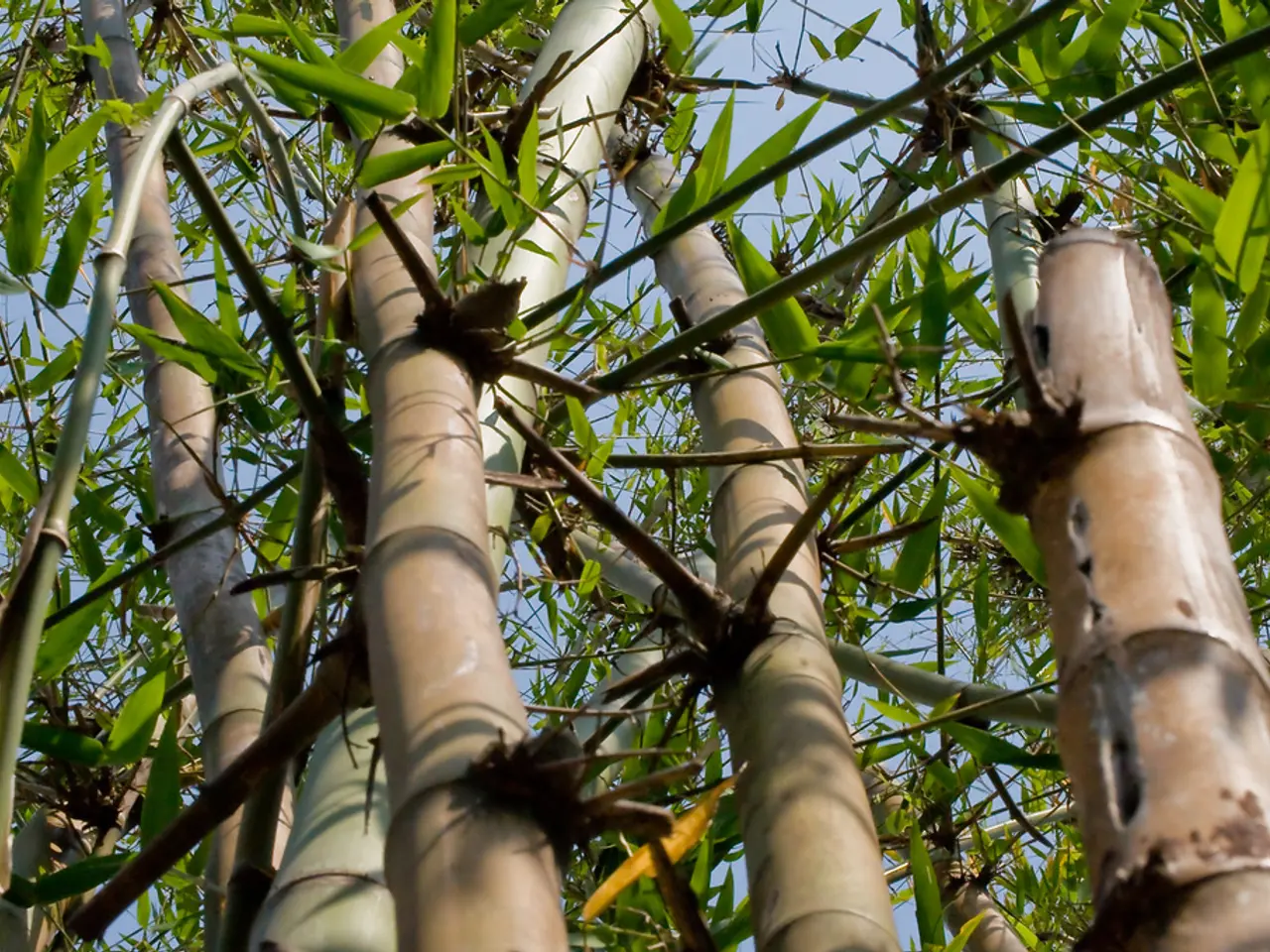Essential comfort vs. extravagance: Air Conditioning's status
**Asia's Record-Breaking Heatwave Puts Sustainable Development at Risk**
Asia is currently grappling with an unprecedented heatwave, with temperatures soaring to record-breaking levels in various countries. This extreme weather event is posing a significant challenge to sustainable development, particularly in India, according to a study by scientists from Cambridge University.
The heatwave has resulted in a surge in electricity consumption, setting new records in Thailand, while some Indian and Bangladeshi regions have experienced power outages due to the heatwave-induced overload. In Myanmar, both Shwebo and Bagan have registered new local temperature records at 44°C and 45°C respectively.
The prolonged heatwave, with daytime temperatures remaining at extremely high levels for weeks, has serious implications for the region's sustainable development goals (SDGs). Health and well-being are particularly affected, with the elderly, children, and outdoor workers at increased risk of heat-related illnesses and deaths. In 2024 alone, record-breaking temperatures were reported across the continent, leading to severe health consequences.
Extreme heat also disproportionately affects low-income and marginalized communities, exacerbating existing inequalities. The urban heat island effect in densely populated cities further intensifies risks for urban poor, who often lack access to cooling and healthcare.
Heatwaves also reduce labor productivity, particularly in agriculture, construction, and tourism—sectors critical to Asia’s economies. By 2050, extreme heat could decrease annual GDP by 2.5% in parts of Asia, slowing economic development and increasing poverty.
Infrastructure is also at risk, with heat extremes damaging transport systems, straining energy grids, and accelerating infrastructure degradation, necessitating costly upgrades and repairs. The region faces heightened risks from linked climate extremes—droughts, floods, and cyclones—all of which are projected to become more frequent and intense, complicating adaptation and mitigation efforts.
The heatwave also threatens food security. Extreme heat and drought reduce crop yields, threaten livestock, and disrupt food supply chains. In 2024, China experienced a severe drought affecting nearly 5 million people, highlighting the vulnerability of regional agriculture to climate extremes.
Glacier melt in the Himalayas and Tian Shan—accelerated by reduced snowfall and intense summer heat—threatens long-term water supplies for irrigation and drinking. Twenty-three of 24 monitored glaciers in these regions lost mass in 2024, increasing the risk of water shortages and related hazards.
Millions in South Asia depend on rain-fed agriculture. Prolonged heatwaves and irregular monsoons can devastate rural economies, pushing more people into poverty and food insecurity. Heat-related damage to infrastructure and increased frequency of extreme weather events can also disrupt the distribution of food, further endangering food security in urban and peri-urban areas.
India, with its large agrarian population and rapidly growing cities, is especially vulnerable. Without urgent adaptation, the combined effects of extreme heat, water stress, and extreme weather will hinder progress on multiple SDGs, from hunger and health to economic growth and reduced inequalities.
The table below summarises the key projected impacts:
| Impact Area | Projected Outcome | Relevance to India & SDGs | |---------------------|---------------------------------------------------|------------------------------------| | Public Health | Increased heat-related illness and death | SDG 3 (Good Health) | | Agriculture | Reduced crop yields, livestock stress | SDG 2 (Zero Hunger) | | Water Resources | Glacier melt, water shortages | SDG 6 (Clean Water) | | Economic Growth | Lower productivity, GDP loss | SDG 8 (Decent Work) | | Infrastructure | Strain on energy, transport, urban systems | SDG 9 (Industry, Innovation) | | Inequality | Disproportionate impact on poor and marginalized | SDG 1, 10 (No Poverty, Equality) | | Climate Action | Increased frequency of linked extremes | SDG 13 (Climate Action) |
The heatwave has already claimed at least 13 lives in India, and many poorer people have found it difficult to follow the urgent advice to stay indoors. Air conditioning is a luxury in these countries, and the overload caused widespread power outages, especially in poverty-stricken Bangladesh. Authorities have issued official warnings for people to avoid staying outside in many provinces.
Rainfall since Sunday has brought relief to the northeastern parts of India, and similar relief is expected in the most affected parts of Southeast Asia in the coming days. However, heavy storms are also expected due to the clash of different air masses.
Immediate action is needed to build resilience, protect vulnerable populations, and secure sustainable futures across the region. Without rapid, coordinated adaptation and mitigation, these events will undermine decades of progress on the SDGs, exacerbate inequalities, and place hundreds of millions at risk of hunger, poverty, and displacement.
The heatwave in Asia, a significant challenge to sustainable development, has highlighted the intersection of science and environmental science, as studies by Cambridge University scientists reveal. This extreme weather, associated with climate-change, is impacting health, agriculture, water resources, economic growth, infrastructure, inequality, and climate action, as detailed in the SDGs summary.
The impact of this heatwave on Asia's weather patterns could have lasting repercussions for the region's development goals, particularly in India, where record-breaking temperatures have already claimed lives and posed difficult living conditions for millions.








